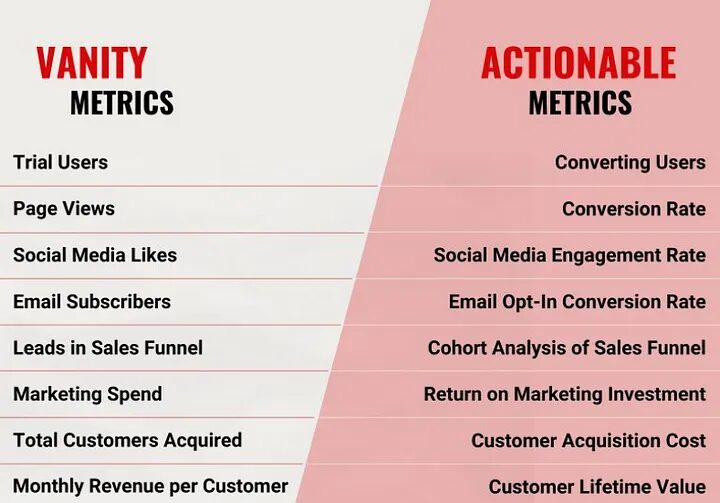Some things are all style and no substance, and that can be the case with vanity metrics. They can look shiny and feel significant, so it can sting to realize that the data doesn’t provide any actionable insights. To make the most of your marketing efforts, your brand should avoid using vanity metrics and look instead to marketing metrics that give a complete picture of what is taking place with your digital marketing strategy.
So, what is a vanity metric and what actionable metrics should you be tracking instead to clearly assess digital marketing KPIs? Keep reading to learn more!
What is a vanity metric?
We’ve talked about vanity metrics before, specifically in reference to how they apply to influencer marketing. Vanity metrics are data sets that can be easily measured, but don’t give actionable insights or an indication of campaign performance. These numbers can sometimes be inflated, or simply don’t add up to results. For example, an influencer can have a seemingly large number of followers, while engagement and subsequent click-throughs are low.
Here are some vanity metrics to look out for:
Number of social media followers – This can be an impressive number and a validation of credibility that you’re doing something right, but it can also be a vanity metric because it doesn’t necessarily translate to meaningful engagement, conversions or business outcomes such as sales, leads or in-store visits.
Website traffic volume – High website traffic numbers may indicate a healthy level of visibility and interest in your brand or content. However, without additional context such as conversion rates, bounce rates or session duration, it becomes a vanity metric because traffic volume alone doesn’t provide an understanding of the quality of traffic, user engagement or the effectiveness of marketing campaigns in driving desired actions.
Impressions and reach – Impressions and reach metrics measure the total number of times your content or ads are displayed to users. While these metrics indicate visibility and exposure, they can easily slide into the vanity metric zone because they don’t provide visibility into user engagement, conversion rates or the actual impact on business outcomes. A high number of impressions doesn’t necessarily translate to meaningful interactions or conversions.

Here are some actionable metrics to track that will provide good insight into digital marketing performance:
- Conversion rate: Conversion rate measures the percentage of users who take a desired action, such as making a purchase, filling out a form or signing up for a newsletter, out of the total number of visitors to your website or landing page. This is not a vanity metric as tracking conversion rate helps evaluate the effectiveness of your marketing efforts in driving tangible results and generating leads or sales.
- Cost per acquisition (CPA): CPA calculates the average cost of acquiring a new customer or lead through marketing efforts. It is calculated by dividing the total campaign cost by the number of conversions generated. CPA helps assess the cost-effectiveness of marketing campaigns and allows for comparison across different acquisition channels or strategies, making it an excellent actionable metric.
- Click-through rate (CTR): CTR measures the percentage of users who click on a specific link, ad or call-to-action (CTA) out of the total number of users who view it. CTR is not a vanity metric and is commonly used to evaluate the performance of digital ads, email campaigns and website content in capturing user attention and driving traffic to desired destinations.
Just say no to vanity metrics
When assessing marketing metrics, it’s good for your brand to know which are actionable metrics and which run the risk of being a vanity metric. Understanding what data sets to focus on and prioritize really depends on your specific goals, digital marketing KPIs, the platforms you are using and the types of marketing efforts (email, organic social, paid ads, etc.) that are being employed.
The digital marketing team at Beyond Fifteen can help your brand develop a campaign and determine which marketing metrics to track based on your goals. No vanity metrics allowed!
